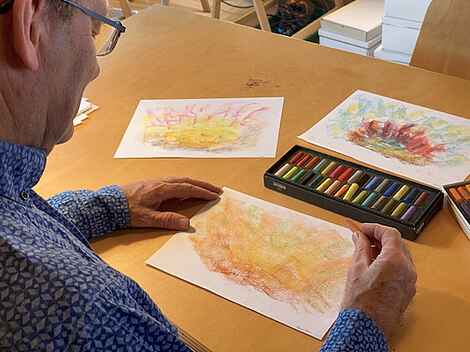Fragrance painting means: smelling a part of a plant or any other sample and transforming it into a picture.
Fragrance painting is a method to transform sense perception into imagination with full consciousness, experiencing the etheric qualities of substances by using art as a tool.
In the following paper Torsten, who developed the method and Jasmin, who is performing it in workshops, present a practical example of a workshop. The background and theory of the method are described and it is introduced as an extension of the Aroma Painting method.
In 1920 Rudolf Steiner mentions a method for scientists to enhance their consciousness from sense perception into imagination (see literature at the end of this text). Here we want to outline how to practice this method in research and workshops.
We would always recommend beginning with a short description of the method and of the procedure the participants should follow, and then start doing, step by step. The background and theory can be explained later.
